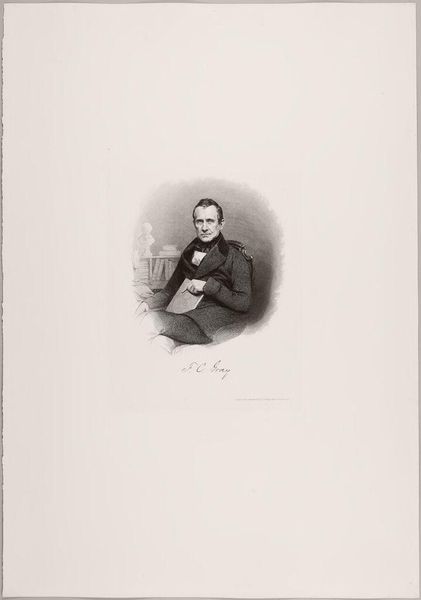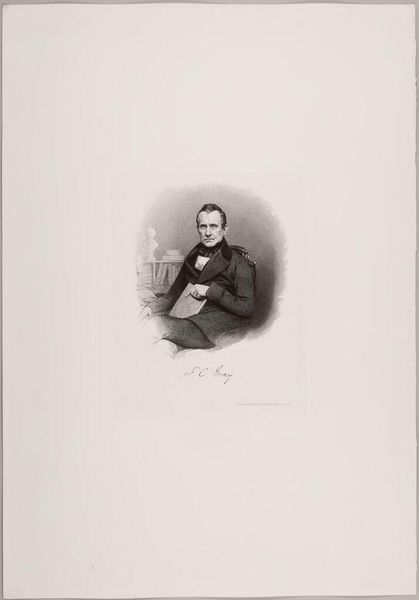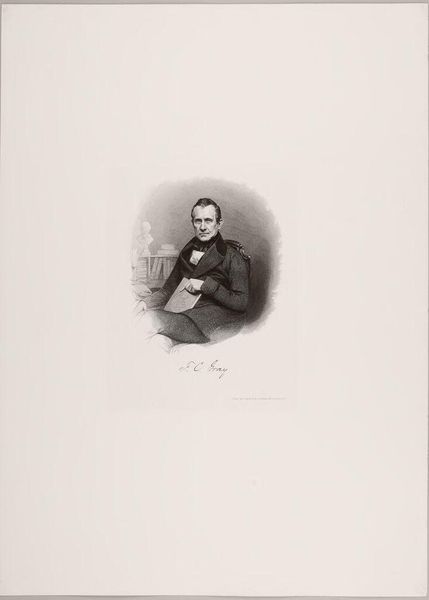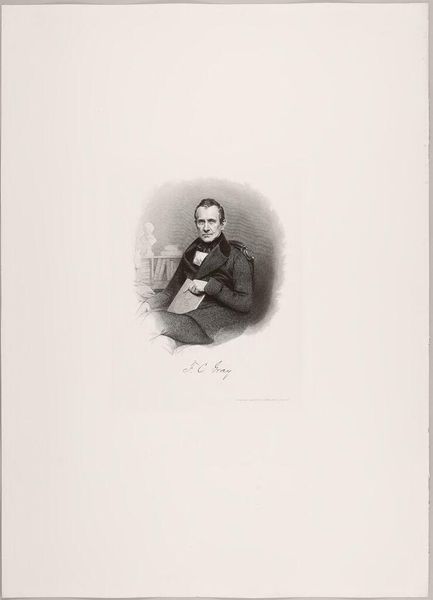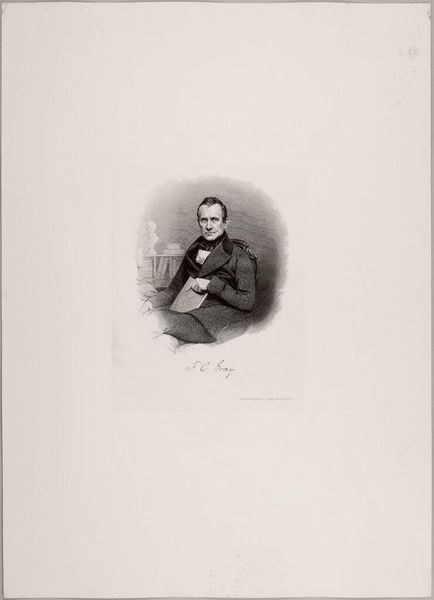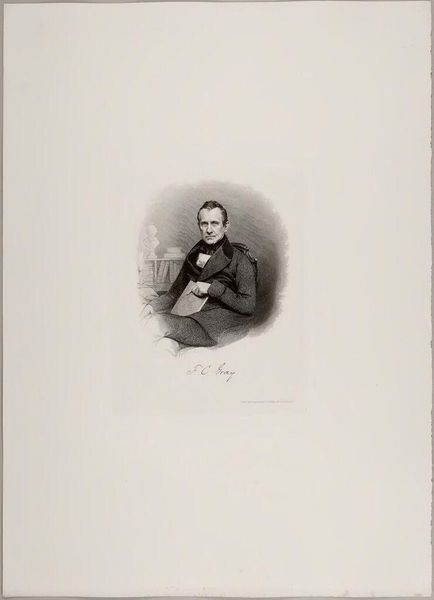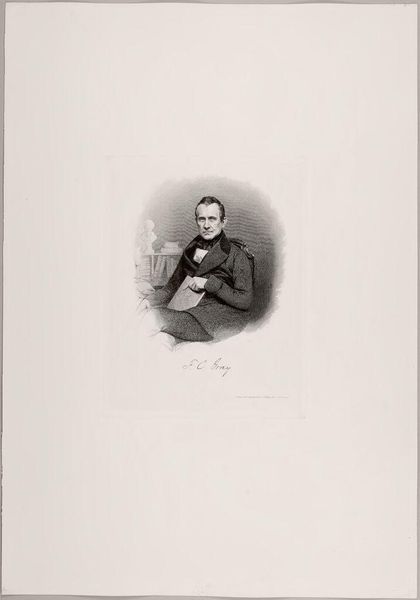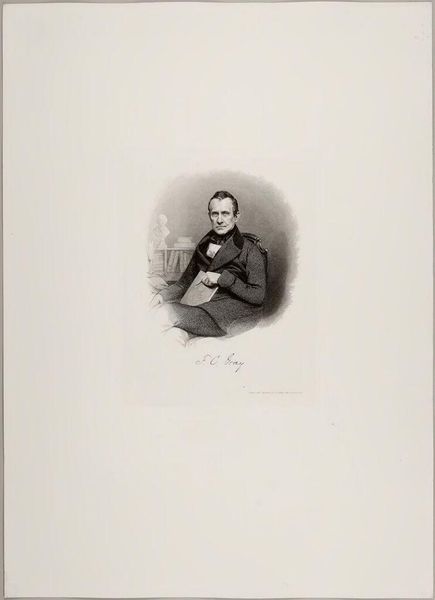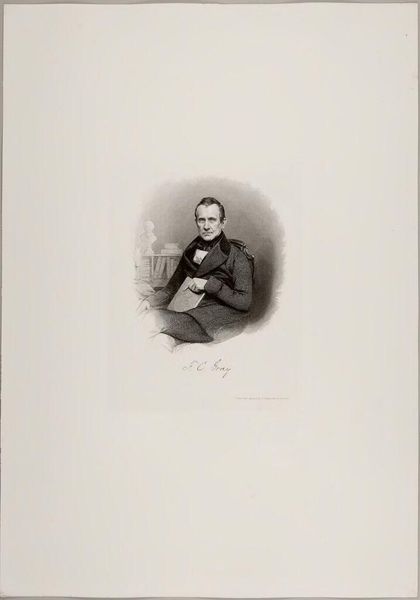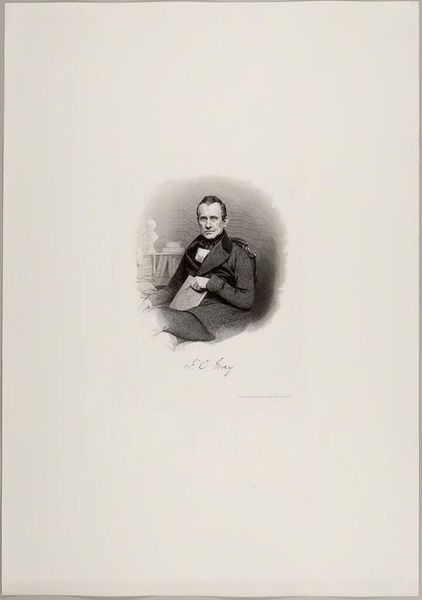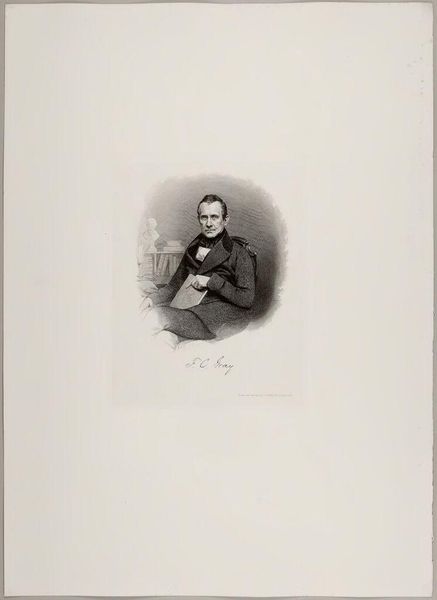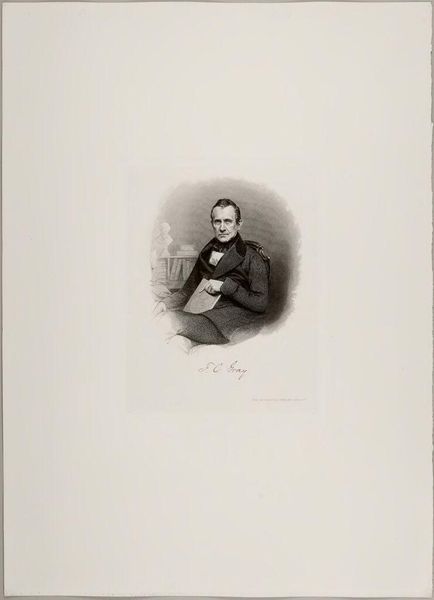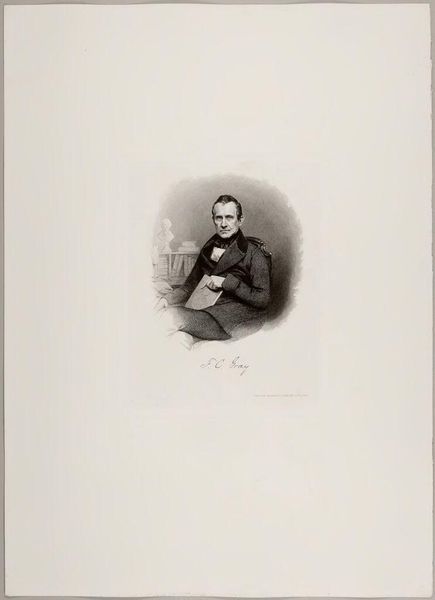
Copyright: CC0 1.0
Editor: This is Lazarus Gottlieb Sichling's portrait of Francis Calley Gray. It's a very formal, almost severe depiction. What strikes you about it? Curator: It's tempting to view this simply as a biographical portrait, but consider the power dynamics inherent in portraiture. Who commissions it, and what image are they trying to project? Gray likely sought to solidify his legacy, and Sichling, as the artist, helped construct it. What does this portrait tell us about the societal expectations of men of Gray's stature during that era? Editor: So, it's less about Gray as an individual, and more about Gray as a symbol? Curator: Precisely. Think about the context of wealth and class – portraiture was often a tool to assert dominance. This image becomes a document of social power, not just a likeness. It's a visual statement of Gray's position in society. Editor: I never considered how a portrait could be a statement about society itself. Curator: Indeed. By examining these portraits critically, we can glean significant insights into the values and hierarchies of the past.
Comments
No comments
Be the first to comment and join the conversation on the ultimate creative platform.
